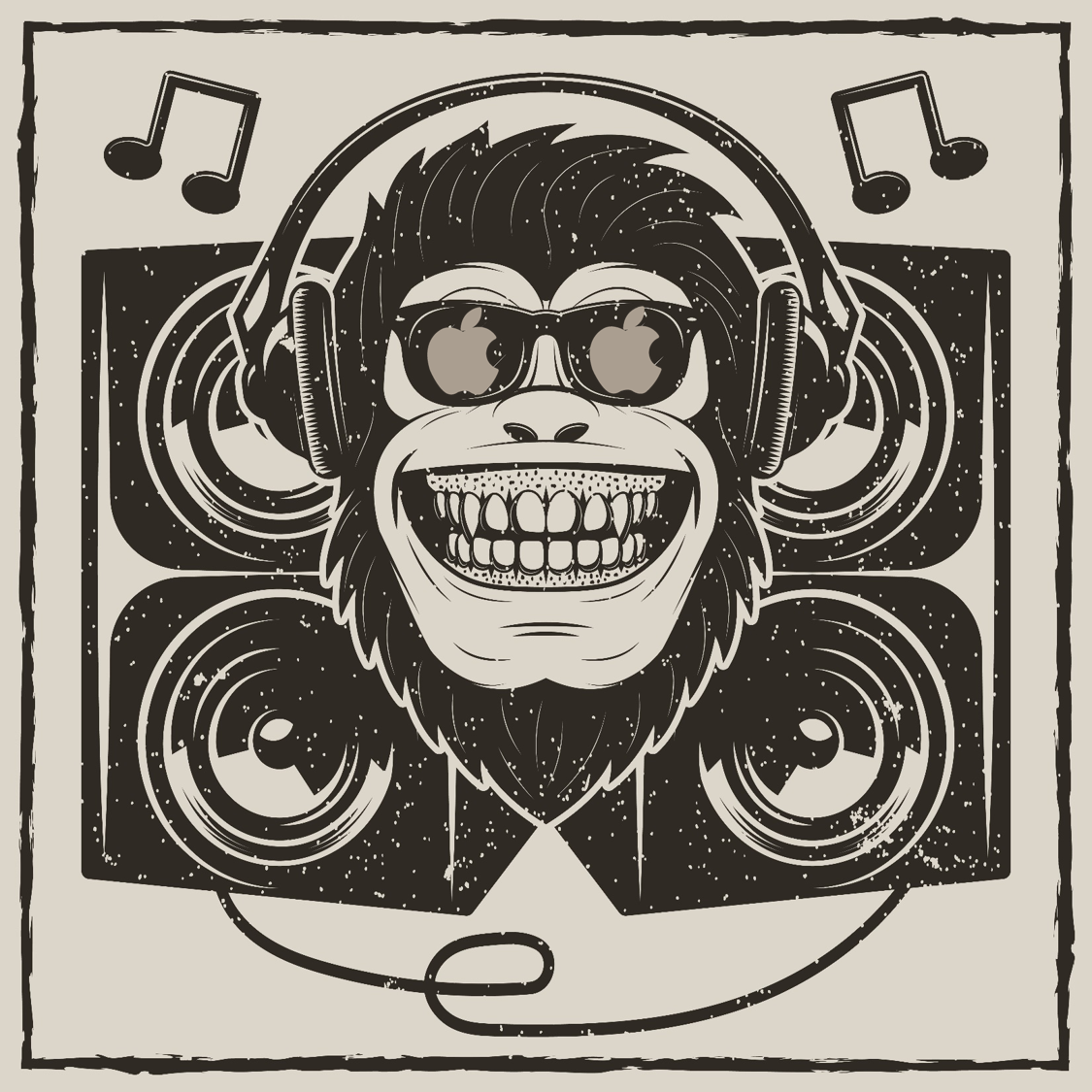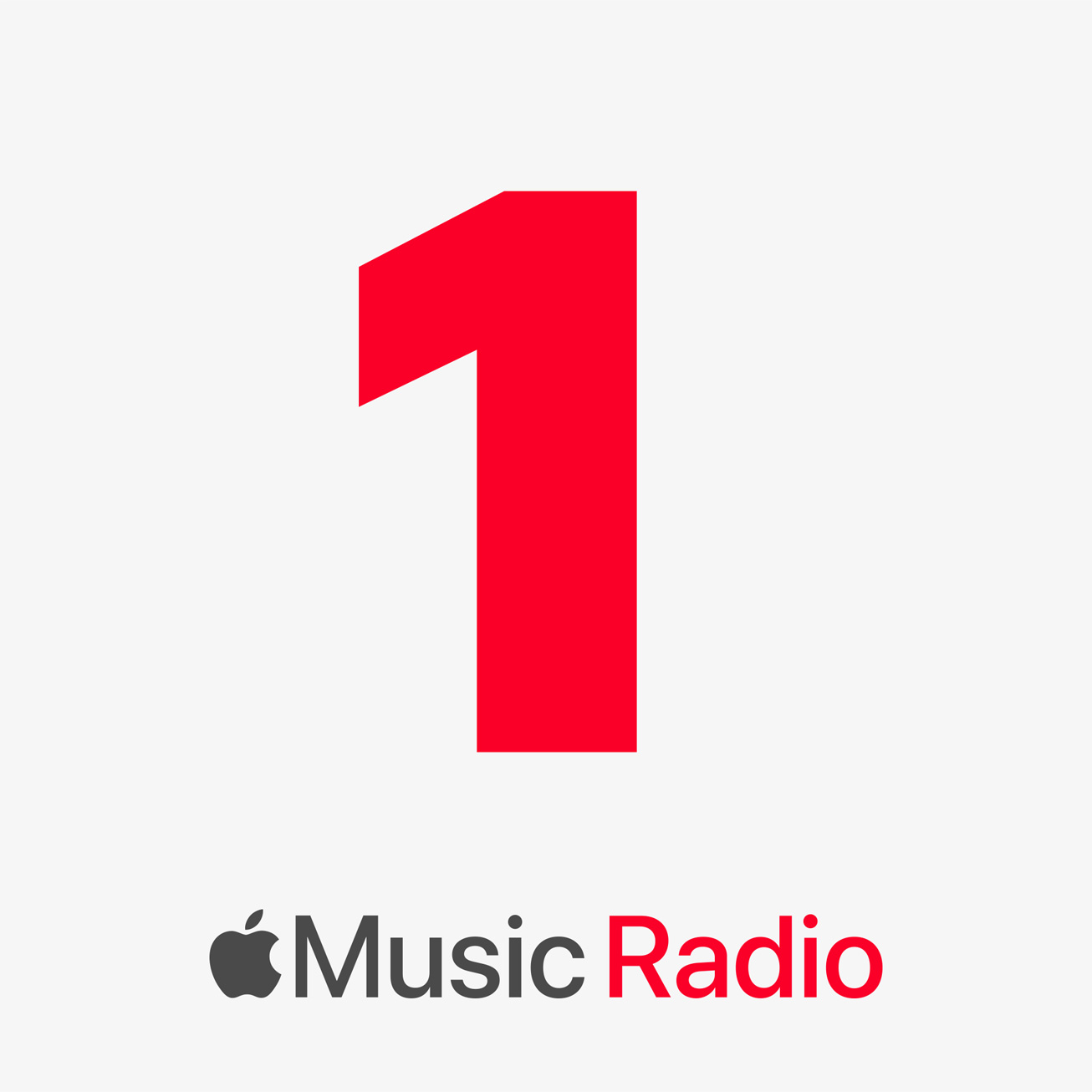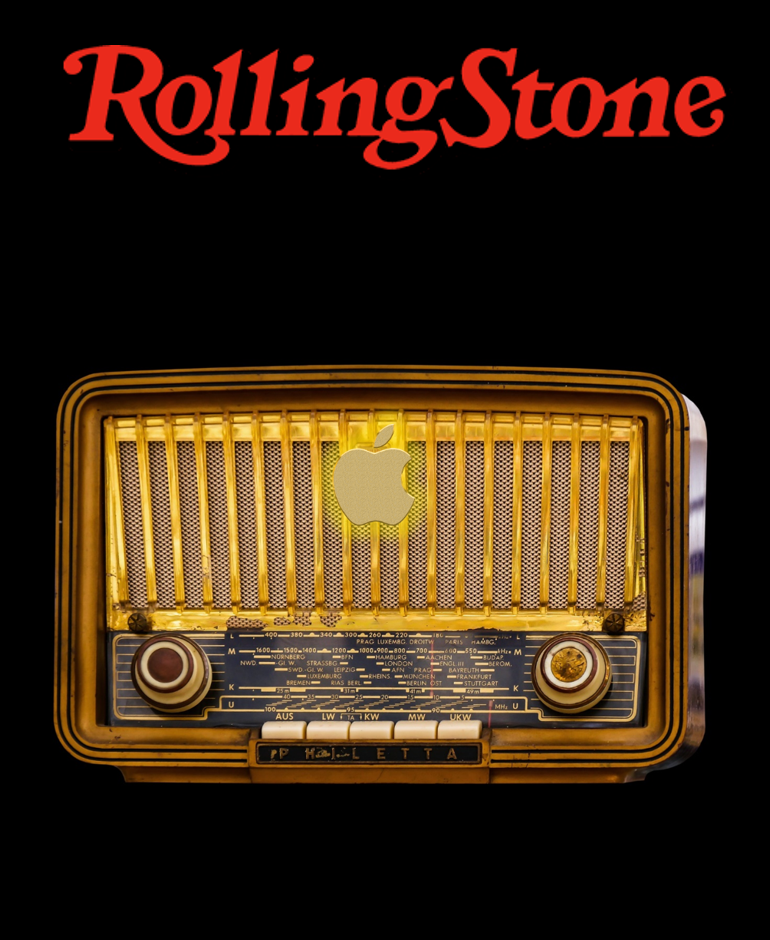
It doesn’t take much for Apple to make news. But yesterday’s expected headline still came with a shock and awe factor.
Apple became the first company in U.S. history to reach the $2 trillion mark. No one else – Amazon, General Motors, Google, Walmart – has come close.
But that wasn’t the only announcement involving Apple’s reach and power. On Tuesday, Apple unveiled its latest radio domination plan with the formation of Apple Music Radio.
Apple went into the “radio business” exactly five years ago with the launch of Beats 1. It was a big deal during that summer of 2015, hiring well-known personalities like Ebro Darden and Zane Lowe. Back then, we blogged about Apple’s entry into radio with a post called “The R Word” – yes, radio. That was because the talented Apple team worked hard to figure out what to call their new audio channel.
And at the end of a long process, Lowe had to admit his frustration in a New York Times story:
“Part of the last three months has been desperately trying to come up with a new word that’s not radio. We couldn’t do it.”
That was quite an admission. And now in the summer of 2020, Apple is still chasing radio around the audio rec room.
Yesterday’s announcement signals a rebranding effort for Beats 1, now known as Apple Music 1.
And it also covered the launch of two streaming “radio stations.” Apple Music Hits features big songs from the ’80s, ’90s, and ’00s. And Apple Music Country needs no additional description.
A close read of Apple’s press release for this next generation of “radio” contains some interesting keywords and phrases.
You don’t even have to read between the lines to understand their underlying strategy – and how they plan to challenge broadcast radio. And satellite radio, and other streaming pureplays as well.
None of these references made it into the Apple’s release by accident. All were carefully selected by the wizards in Cupertino. To hit just the right notes – or beat – you know this document was wordsmithed a dozen times by several teams before someone hit “submit.”
And the intended audience was the media community. And if anyone was listening – radio broadcasters.
Consider the following, all of which made it into this document, including this key pronouncement:
“Apple loves music”
It’s the simplest of positioning statements, but it’s loud and clear.
About Apple Music 1 (formerly Beats 1), the release makes these telling references:
“championed human curation and discovery”
“inherent camaraderie with the artist community”
“unparalleled global platform”
“celebrating the vibrancy of Latin music”
“very best local African music and artists”
And about Apple Music Hits:
“new shows from notable artists and hosts”
“stories behind the most popular songs in the world”
“daily on-air hosts”
About Apple Music Country:
“increasingly diverse genre”
“stars of tomorrow”
“legendary artists and tracks”
“talent roster”
 A new story in Rolling Stone amplifies Apple’s intentions: “Why Apple Still Cares About Radio” by Samantha Hissong. It’s a revealing read, worthy of your time, especially if you’re in the radio business.
A new story in Rolling Stone amplifies Apple’s intentions: “Why Apple Still Cares About Radio” by Samantha Hissong. It’s a revealing read, worthy of your time, especially if you’re in the radio business.
If Apple invested in a perceptual study for their music service by any of radio’s fine research companies, you can imagine a key recommendation might read something like this:
“Beats 1 has been around for five years, and still lacks the top-of-mind awareness necessary to become a household name – much less a go-to place for music fans. Moving forward, it is important that Apple make its relationship with music and musicians clear:
Apple loves music.
We recommend making some necessary product changes, but also extensively marketing Apple’s music platform against conventional broadcast radio (which is showing some wear and tear in this study).
Or another avenue would be to rebrand Beats 1 altogether, while launching focused format stations with live personalities, and retrenching with features and services FM radio either cannot provide or has all but abandoned.
Given broadcast radio’s flagging fortunes, Apple has a chance to make radio cool again.”
That last point is a key. The Rolling Stone story observes how FM radio has lost its mojo given its “reputation for being behind the curve and more focused on what’s already trending than discovery.”
In her story, Hissong points out how research indicates declining engagement broadcast radio, especially among Gen Z – much  more enamored with streaming services than anything offered on the FM dial. As many exasperated parents in radio tell me about their teens, “They don’t even know what a radio is.”
more enamored with streaming services than anything offered on the FM dial. As many exasperated parents in radio tell me about their teens, “They don’t even know what a radio is.”
So, why would Apple “put so much time and energy looking into a medium of the past?”
Because as Hissong concludes, “While (listening) statistics may reflect a shortcoming of terrestrial radio stations, they also present opportunity. If done well, a modern music company like Apple could fill the gap.”
This is as strong a suggestion as it gets that radio can still be cool, but not the way it’s currently being presented by long-time broadcasters.
How does Apple hit goal?
For one thing, they use their $2 trillion footprint to attract the participation of mega-artists that include Elton John, Lil Wayne, Lady Gaga, and even the Backstreet Boys. That will have an impact on music fans.
And as Rolling Stone points out, Apple’s interpretation of the medium will be a mashup of “the human component of live radio and mixing it in with their algorithmic playlists.” In other words, live, engaged, smart talent who know their music, combined with the science of music selection and scheduling. Isn’t that what broadcast radio has supposed to have been doing all along?
The story even quotes one of our Techsurveys about “the power of local DJs, hosts, and shows” to radio fans.
Apple smells blood – or better put, opportunity.
The company didn’t make its schematics or architecture available to Rolling Stone, but noted that Apple doesn’t want to clone broadcast radio. Zane Lowe spoke about how in the revamped platform, Apple “wanted to do away with some of the traditional parts of radio.”
No details were mentioned, but given that Apple Music is a subscription service, commercials and other clutter has to be part of that promise.
And here’s a key. The story points out Apple’s singular focus on globalization – creating music playlists that includes more music from around the world.
That sounds good on the surface, but it’s a leap to suggest that Apple subscribers in Austin, Altoona, or Anchorage will share music tastes with fans in Angola, Austria, or Antigua.
And that takes us back to square one. As Rolling Stone reminds its readers, “radio thrives on being hyper local.”
Or at least it did.
Apple’s playbook is a more than a shot across the radio bow. It’s a challenge to broadcasters to either step it up and “get back to where you once belonged” – or get out of the way.
Being live, local, in the moment, and focused on the listener experience are all part of the formula that got broadcast radio to the dance – and into the hearts and minds of millions of Americans.
I’ll leave an assessment of how FM radio is making good on those values up to you.
Apple’s $2 trillion valuation is impressive, especially when you consider the entire broadcast radio industry in the U.S. has an estimated net worth in the $18 billion range.
There’s a lot of zeroes in the data, so I’ll do the math for you. The overall net worth of American radio is less than 1% of Apple’s total value.
A rounding error.
If it were legally possible, Apple could buy the whole shooting match without Tim Cook’s accountants even noticing the price. But FCC regulations, of course, wouldn’t allow that to happen.
For Apple, it’s a matter of choosing their next best option:
Reinvent radio – make it cool again.
Will radio broadcasters accept that challenge? Will it rebuild and fortify its strengths Apple cannot match?
Or will it let the gorilla have its way?
Thanks to Lori Lewis, Mike McVay, and Samantha Hissong.
- Media And Technology In 2025: Believe It Or Not! - April 18, 2025
- In Radio, You Just Never Know - April 17, 2025
- The Secret To Making A Great Podcast (And Great Radio) - April 16, 2025




Great insight as always Mr Jacobs. You left out the greatest benefit for terrestrial radio and that is it is FREE. Apple may be able to compete with their cash coffers but I doubt their earnings press conferences and releases will ever include the F word.
You are right, Jake. That’s a serious omission on my part, and an important factor in explaining why the radio business model has been a winner…for a century and counting. Thanks.
I don’t think it was explicitly mentioned in Apple’s announcement, but I’m pretty sure that the Country channel originates from new facilities in Nashville. Also, Apple did indeed hire several more broadcast veterans for programming/on-air roles. Both of those underscore that, if it wants to, Apple really could make this a lot larger–with, say, Latin-focused offerings originating from Miami or Mexico City; Asia/Pacific-based programs from Seoul, Singapore, or Sydney; or African-music shows from Johannesburg.
An article by TechCrunch’s Sarah Perez (at https://techcrunch.com/2020/08/18/apple-launches-apple-music-radio-with-a-rebranded-beats-1-plus-two-more-stations) highlights the simplified naming structure of the channels–with the implication that it could also facilitate further launches.
Thanks for the update, Eric. I fully expect there will be more format stations to come, especially if they get traction with Hits and Country. Appreciate you chiming in.
Excellent overview, Fred. Terrestrial broadcasters are under Apple’s gun, as is the satellite broadcaster (though your emphasis was on the former), and I suggest their best defense is the one even more fundamental than the (admittedly vital) “live and local” dimension of broadcasting: the robustness of their technology.
Put simply, true radio does not depend on the internet to reach the listener. Sure, I myself often refer to streaming services colloquially as “radio,” but you and I know the difference even if many in the audience are oblivious to it. Point-to-point is different from point-to-multipoint by orders of magnitude. That’s why, when the fecal matter hits the rotating blades, you turn on your radio for information–the internet, wonderful though it is, likely isn’t reliable because of its inherent fragility. We love true radio for that very reason. Let’s share the love!
No doubt about it – terrestrial transmission has its advantages, as long as most people have receivers in all the right places.
Meantime, I’m avoiding those rotating blades. They can be messy.
Thanks for engaging with our blog today, John.
I agree with you both, John and Fred. I especially liked the reminder that “point-to-point is different from point-to-multipoint by orders of magnitude.”
My only reminder to the industry is it has its own “fragility” tied to someone actually being there when someone tunes in to see what all the “fecal matter and rotating blades” are about.
There was a time when, if you felt an earthquake, you immediately put on the radio and everyone was talking about it–often taking calls from all over the area with people describing how it felt in their location. There was a bonding such events brought and radio was the meeting point. Now, depending on the time of day, it can be hours before anyone on the radio starts reporting such an event–and for many stations, the automation will keep plugging along with no mention at all.
Contrast that with Facebook and other social media, where anytime, day or night, you immediately start seeing the posts, “Earthquake!” followed by those same people posting comments about what it felt in their locations.
Guess what I’m trying to say is radio also has its fragile points. Handle with care.
Good advice, David, and I would hope these challenges from Apple (and others) would serve as reminders to our industry leaders about radio’s role in the modern media landscape. Let’s hope so, right?
Thanks for this, Fred. I’ve been listening this afternoon to Apple Music 1. They have a lot of intriguing talent in that lineup, and the ability to harness star power and access to celebrities. Based on what I’ve heard so far, there is A LOT of talk on the channel, which we know from years of research is not necessarily a positive on a channel that brands itself as “music.” Some of the talk I’ve heard is compelling, and other parts are…….talk. They have work to do on the product (don’t we all?), but some real potential with this platform.
Appreciate it, Carl, and thanks for the observations. I did a fair amount of listening when Beats 1 first signed on. It was spotty – some good moments, some music that was compelling, but as you point on, a fair amount of talk, and often an experience that wasn’t always accessible. We’ll keep an ear on it.
And in the meantime, best of luck to you and thanks for your great service these many years. It’s been an honor to work with you. Stay safe.
Another great one, Fred, with an apt quote from “Get Back” by the BEATles. As an industry, we do need to both move forward and “get back.” The two ARE related.
And you provided some sound consultant “strategery” for Apple. They obviously do read your stuff. Couldn’t you have thrown in some bogus advice that they’d take to heart and lead them astray?
Dave, I wish. Thanks for the comment.